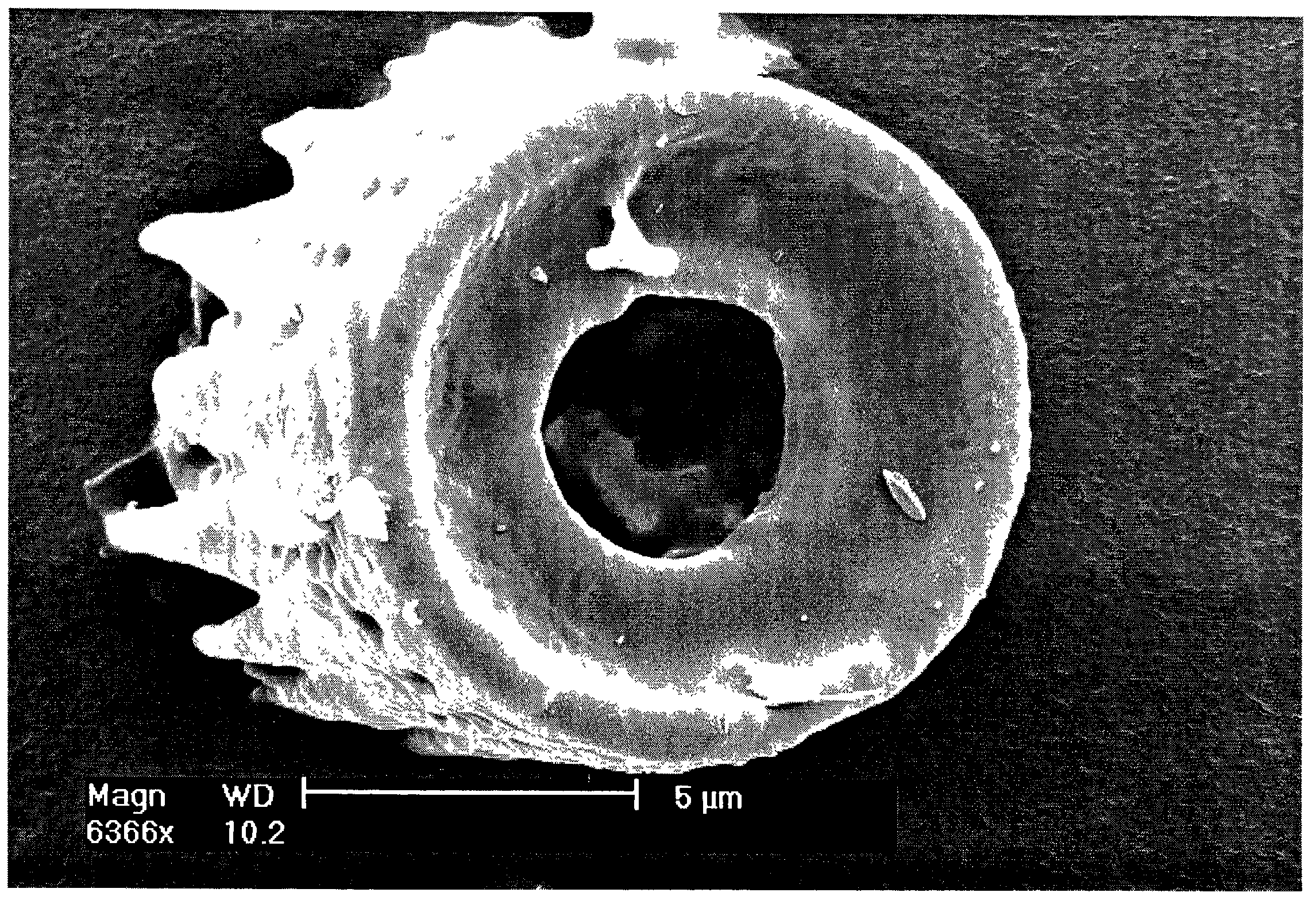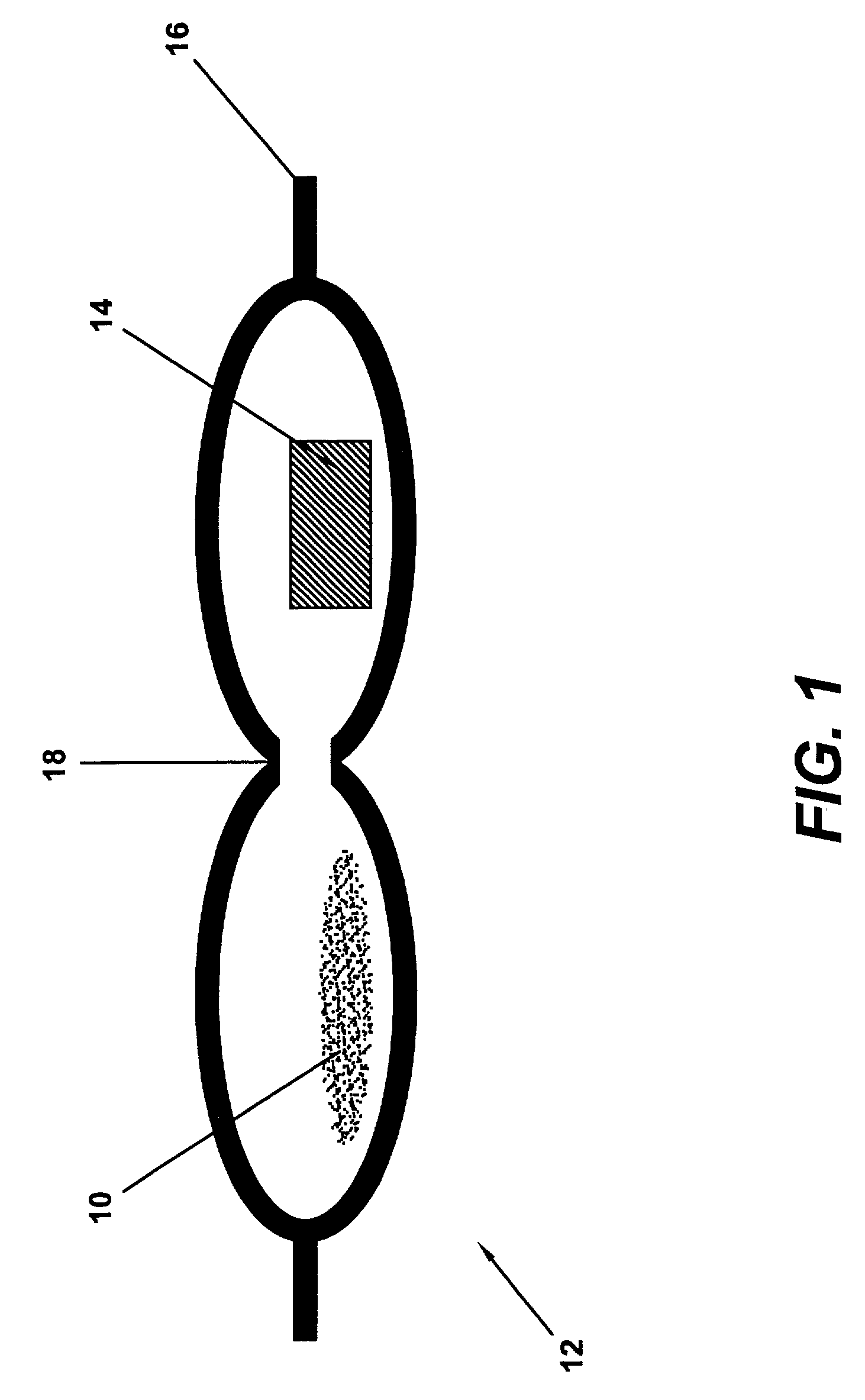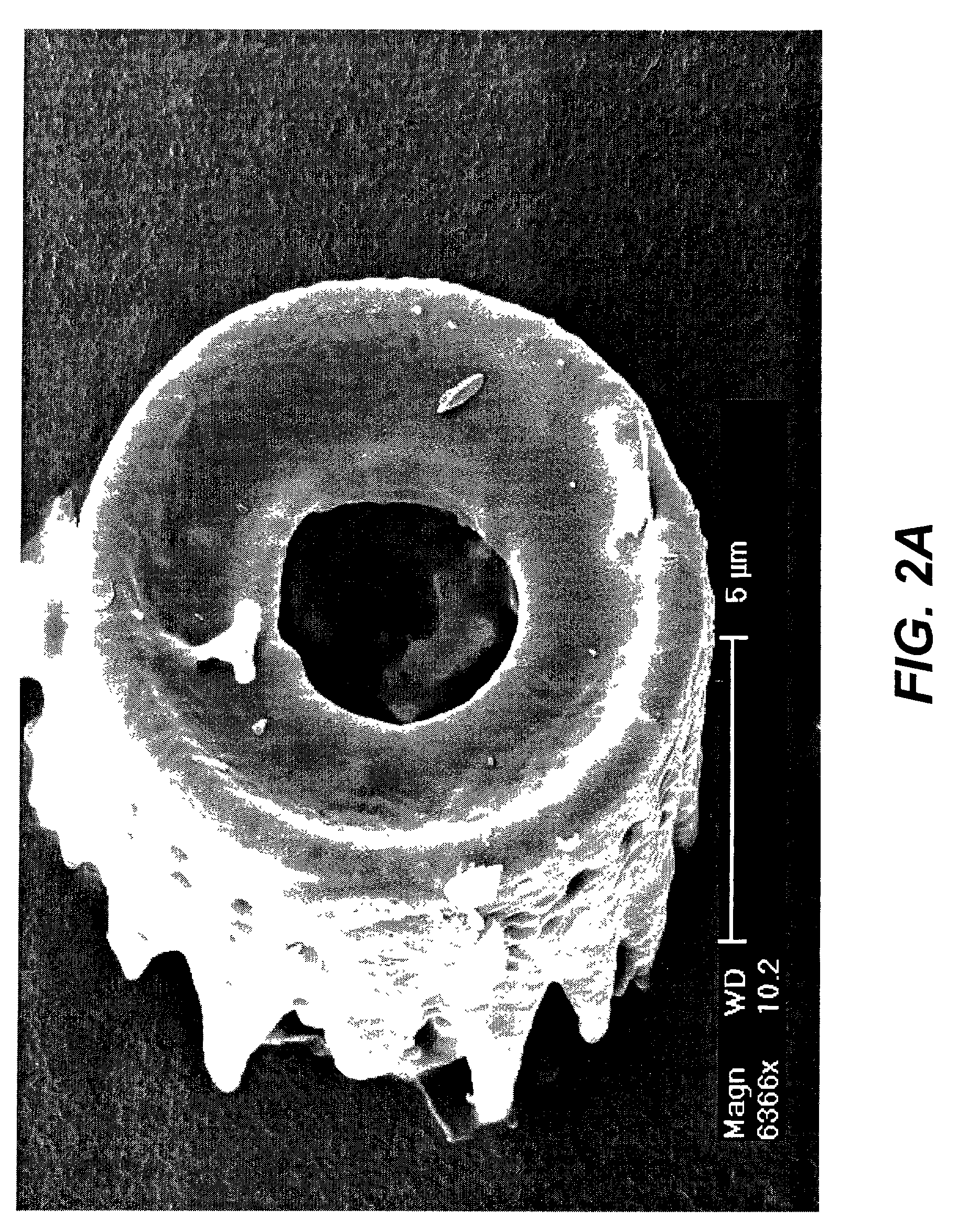Shaped microcomponent via reactive conversion of biologically-derived microtemplates
a technology of biologically-derived micro-templates and reactive conversion, which is applied in the direction of silicon compounds, powder delivery, chemical vapor deposition coatings, etc., to achieve the effect of high scaleability
- Summary
- Abstract
- Description
- Claims
- Application Information
AI Technical Summary
Benefits of technology
Problems solved by technology
Method used
Image
Examples
example 1
Conversion of a SiO2-based Diatom Frustule into a MgO Microcomponent with Preservation of the Starting Frustule Shape
[0073]Diatomaceous earth was obtained from a local vendor. Examination of this batch of diatomaceous earth with scanning electron microscopy revealed that the predominant diatom species was Aulacoseira (see FIG. 2 below). As seen in FIG. 2A–2C, the frustule of the Aulacoseira diatom possessed a cylindrical shape, with fine pores running in rows along the walls of the cylinder. As seen in FIGS. 2A and 2B, one end of the cylinder was open and the other end was closed (note: the image in FIG. 2C reveals two Aulacoseira frustule cylinders connected together end-to-end). Prior to conducting the reactions discussed below, these diatoms were placed in a ceramic crucible and then heated to 60000 for a total of 8 hours in air, in order to burn away any residual organic material. With regard to FIG. 1, the Aulacoseira frustules 10 were then sealed inside a steel tube 12 along w...
example 2
Conversion of a SiO2 Frustule into a CaO / SiO2-bearing Composite Microcomponent with Preservation of the Starting Frustule Shape
[0080]The Aulacoseira diatom frustules obtained from a local vendor were placed in a ceramic crucible and then heated to 600° C. for a total of 8 hours in air, in order to burn away any residual organic material. The resulting powder was then sealed inside a steel tube (in a manner similar to example 1) along with some solid magnesium. After sealing the tube, the assembly was heated in an inert atmosphere (Ar) tube furnace for 4 hours at 1100° C. After this heat treatment, the steel tube was cut open and the reacted diatomaceous earth powder was removed. An x-ray diffraction pattern of the reacted powder revealed significant peaks for SiO2 and CaO, which indicated that appreciable conversion of the silica diatom frustule into CaO had occurred within 4 hours at 1100° C. A secondary electron image of the partially-converted Aulacoseira diatom frustule is shown...
example 3
Conversion of a SiO2 Frustule into a CaO / MgO-bearing Composite Microcomponent with Preservation of the Starting Frustule Shape
[0081]The Aulacoseira diatom frustules obtained from a local vendor were placed in a ceramic crucible and then heated to 600° C. for a total of 8 hours in air, in order to burn away any residual organic material. The resulting powder was then sealed inside a steel tube (in a manner similar to example 1) along with some solid magnesium. After sealing the tube, the assembly was heated in an inert atmosphere (Ar) tube furnace for 4 hours at 900° C. After this heat treatment, the steel tube was cut open and the reacted diatomaceous earth powder was removed. The powder was then resealed into a new steel tube along with some solid calcium. The assembly was then heated in an inert atmosphere (Ar) tube furnace for 4 hours at 1100° C. After this heat treatment, the steel tube was cut open and the reacted diatomaceous earth powder was removed. An x-ray diffraction patt...
PUM
| Property | Measurement | Unit |
|---|---|---|
| size | aaaaa | aaaaa |
| size | aaaaa | aaaaa |
| size | aaaaa | aaaaa |
Abstract
Description
Claims
Application Information
 Login to View More
Login to View More - R&D
- Intellectual Property
- Life Sciences
- Materials
- Tech Scout
- Unparalleled Data Quality
- Higher Quality Content
- 60% Fewer Hallucinations
Browse by: Latest US Patents, China's latest patents, Technical Efficacy Thesaurus, Application Domain, Technology Topic, Popular Technical Reports.
© 2025 PatSnap. All rights reserved.Legal|Privacy policy|Modern Slavery Act Transparency Statement|Sitemap|About US| Contact US: help@patsnap.com



